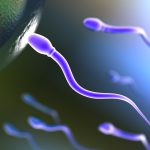Andrology
Andrology: Sperm Motility and Progression

Part 3: Sperm Motility and Progression
The ability of sperm to transverse both the uterus and fallopian tube, to ultimately fertilize an ovulated egg, is dependent upon the sample’s motility and progression.
During intercourse, sperm are deposited into the vagina. The sperm must swim through the cervix and move into the uterus. From one end of the uterus to the other, the sperm must swim to finally reach the awaiting egg in the fallopian tube. While the total distance necessary for the sperm to travel may only be 10 centimeters, given the relatively small size of a human sperm, it is equivalent to the sperm running a marathon and a vast majority of the sperm fail to reach their destination. During the journey, some sperm will run out of energy or swim off in the wrong direction while others may swim in circles or travel to the wrong fallopian tube. Less than 1% of the total ejaculated sperm ultimately reach the egg.
Assessing Sperm Motility and Progression
Motility refers to the percentage of moving sperm in the raw ejaculate. Samples are considered normal if they have greater than 40% motility.
Progression refers to the forward movement of sperm and is recorded as:
- Grade 4: Fast and forward progression where sperm move in a straight direction.
- Grade 3: Sperm move forward but at a slower speed and/or in a curved direction.
- Grade 2: Sperm move slowly and in a poorly defined direction
- Grade 1: Sperm move but fail to progress forward.
- Grade 0: Sperm show no signs of movement.
The total number of sperm cells produced on a daily basis varies with the size of the testicles, but averages 85 million sperm per day per testicle, and decreases with age. Of all sperm produced daily, only a fraction will be motile. Having an adequate percentage of motile sperm with good progression in the ejaculate will help unsure that sperm are capable of arriving at the site of fertilization.
This is part three of our andrology series. Click here to read part four. To view all parts of the series, click here.




